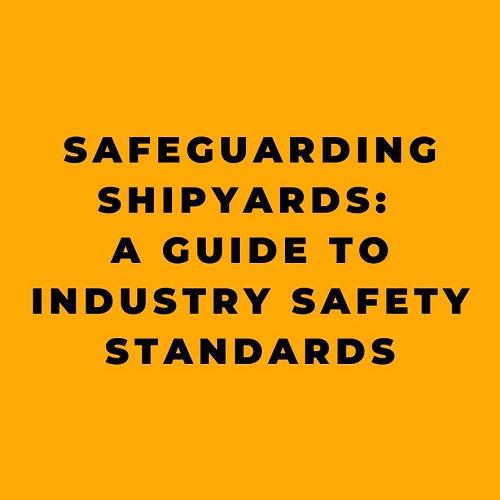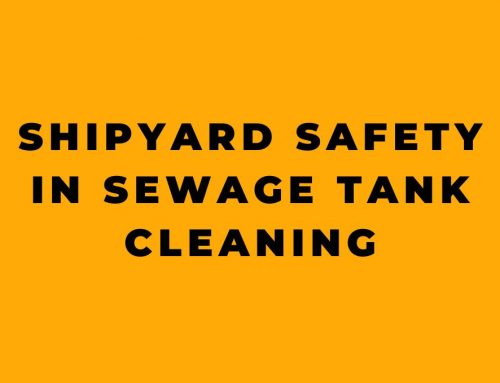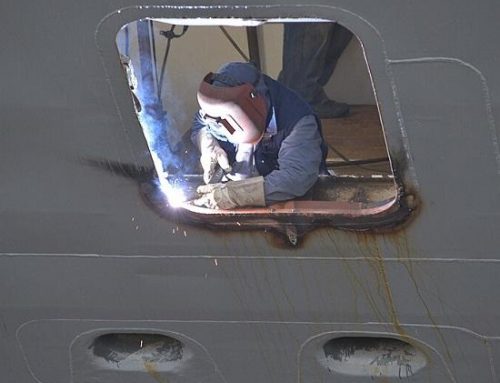Keeping Workers Safe: An Overview of Shipyard Industry Standards
Working in shipyards, whether building, repairing, or dismantling ships and other marine vessels, comes with an array of safety and health hazards. From hazardous materials and dangerous equipment to confined spaces and precarious heights, shipyard employment necessitates comprehensive occupational health and safety practices to protect workers. This article provides an in-depth look at the extensive safety standards and regulations in place for the shipyard industry.
Outlined in Subpart A of the Occupational Safety and Health Administration’s (OSHA) Shipyard Industry Standards, the purpose and scope apply to all ship repairing, shipbuilding and shipbreaking operations, covering a wide range of shipyard employment work. Key responsibilities lie with employers to ensure compliance, provide safe workplaces and supply necessary protective equipment. Definitions establish common terminology for the standards, from “compentent person” to “shipbreaking”, so all parties speak the same language when it comes to safety protocols.
With such a hazardous work environment, confining spaces with poor ventilation or limited exits along with fire and explosion risks pose dangers to life and limb. Subpart B lays out stringent requirements for entering confined spaces, including atmospherical testing procedures before anyone sets foot inside a confined space. Testing must cover oxygen levels, flammability, and toxicity, using specially calibrated equipment operated by qualified personnel. Atmospheres deficient in oxygen or containing too many combustible gases are outright prohibited from worker entry. Constant atmospheric monitoring, full protective equipment, and specialized training prepare qualified persons to do this highly technical work. Emergency rescue plans provide an extra layer of preparation as well.
Equally hazardous hot work like welding or cutting metal introduces ignition sources into an already risky environment. The requirements in Subpart D ensure proper ventilation first and foremost to mitigate sparks or fumes, plus safe practices that account for coatings on metal that may release toxic substances when heated. Exhaust systems, protective clothing and equipment, fire safety measures, training, and special procedures for hot work involving specific metal compounds or containers aim to eliminate accidents and exposure.
As workers access ships high above water and climb scaffolding stories into the air, falls present a grave threat. Guardrails, harnesses, and careful oversight prevent people and objects from hazardous edges or openings. Subpart E’s emphasis on secure footing applies to ladders, ramps, walkways, scaffolds, staging platforms and more. Hardhats protect from falling debris, safety-toe shoes guard against foot injuries, and robust standards for gear handling and rigging eliminate unnecessary risks, granting workers secure access to their job sites.
But hazards exist across all domains of shipyard work, not just confined spaces, hot metal, and precipitous drops. Subpart F regulations promote ongoing diligence and safe practices for general working conditions. Housekeeping, lighting, utilities, equipment, vessels, vehicles and more fall under its purview to cover all facets of shipyard operations. Simple slip, trip and fall prevention often makes the difference between routine task and emergency room visit. The extensive requirements aim to identify anything that could endanger workers on the job site, enforcing solutions to eliminate or control those risks.
Specialized crafts people like welders as well as laborers handling tools and gear for pipefitting, electrical work, painting and general construction rely on Subparts G and H for equipment safety checks and guidelines for operation. Power tool protections, disposal of hazardous substances, gear inspection, storage, operating rules intend to prevent not just major incidents but small daily injuries that impair workers in this physically demanding trade.
And no regulation better exemplifies the precautionary measures shipyard employers must take than the explicit, mandatory Personal Protective Equipment standards in Subpart I. Shipyards contain an array of materials, equipment and processes that threaten life and limb, but PPE acts as indispensable barrier between hazard and harm. Compliance, general requirements, training, selection, maintenance and more ensure this last line of defense stands strong. Hard hats, goggles, hearing protection, respirators, gloves, full body suits and more equip workers for the toughest jobs. Just because risks exist does not mean injury must follow.
Beyond gear and guards, shipyard workplaces contain complex systems central to ships’ operation but hazardous in confined spaces where maintenance and repairs take place. Subpart J requires isolation, lockout/tag procedures, testing and strict access rules for engineering staff before any work can begin on propulsion systems. Subparts K and L similarly demand safety reviews of pressure vessels and electrical systems so those specialized repairs proceed without incident. Streamlined coordination between ship’s crew and shoreside repair staff plays a crucial role in working safely aboard ocean-going vessels.
With so much focus on specialty gear, confined spaces and job site protections, even basic needs like sanitation (Subpart F) and emergency response (Subpart P) receive explicit regulatory treatment to foster healthy, hygienic and responsive work environments. But missing from the playbook of rules are the people that put protocols into practice and make safety more than words on a page. Conscientious training and medical surveillance underpin OSHA’s comprehensive approach to harm prevention. Workers well versed in risks and controls, vigilantly screened for emerging health issues, coached on protective equipment together follow the old adage that an ounce of prevention is worth a pound of cure, keeping shipyards accident free one day at a time.
In an industry where novel challenges arise with each job and each ship, no single document can spell out every contingency. What the extensive Shipyard Industry Standards provide is methodical framework to identify hazards, assess dangers, mitigate risks and prepare for both routine tasks and exceptional circumstances. Granular requirements scale up to big picture view of layered defenses – engineering controls, safety managers, equipment operators, emergency responders and individual workers all playing a role in keeping shipyards incident free. OSHA’s vast and exhaustive standards can not guarantee zero harm, but they furnish invaluable tools to manage the vagaries of shipyard work, not just preserving life and limb but facilitating smooth repair operations where forethought and precaution take the place of injury and chaos. Shipyards bridge the gap between tranquil seas and bustling ports, channeling hazardous industrial processes into orderly transport and commerce. It takes a small army of diligent workers and conscientious overseers to maintain that delicate balance, using OSHA’s Shipyard Industry Standards as guide and guardian of safe shipyard workplaces.










